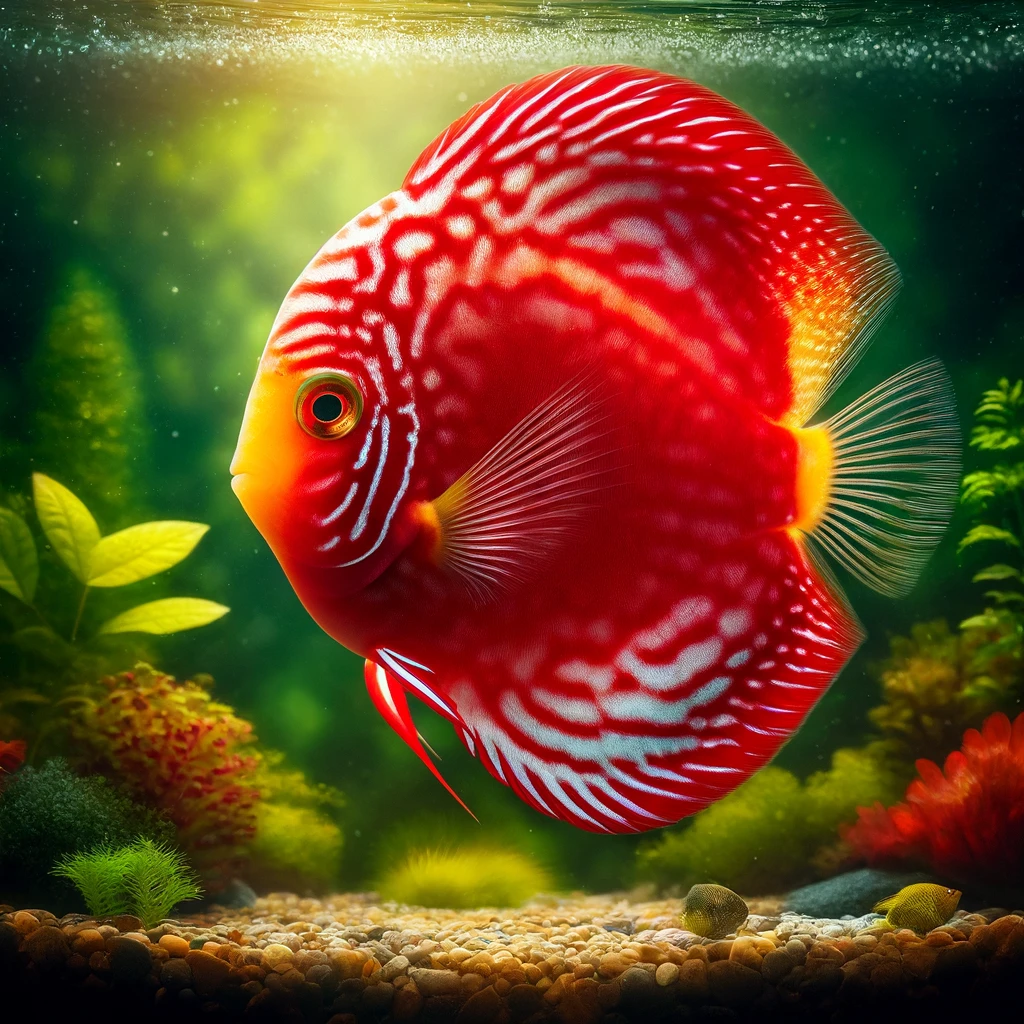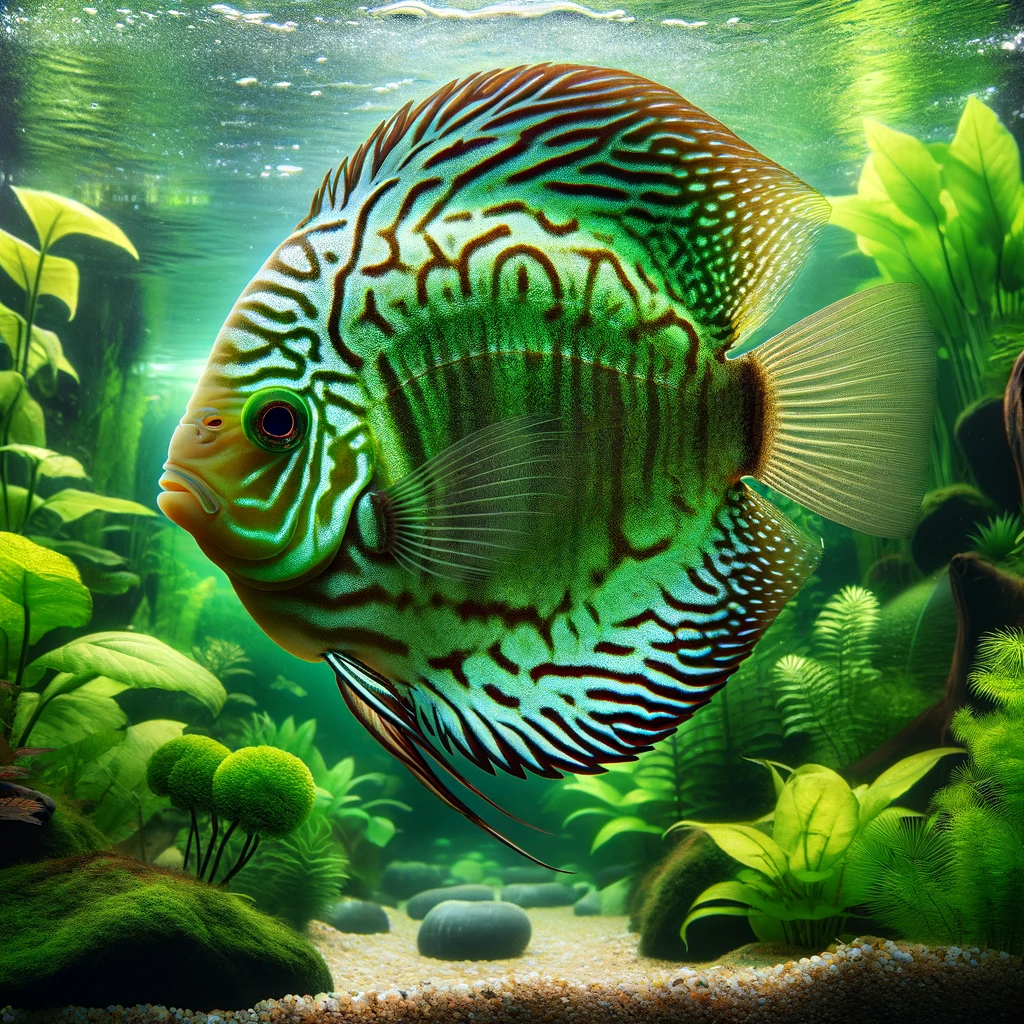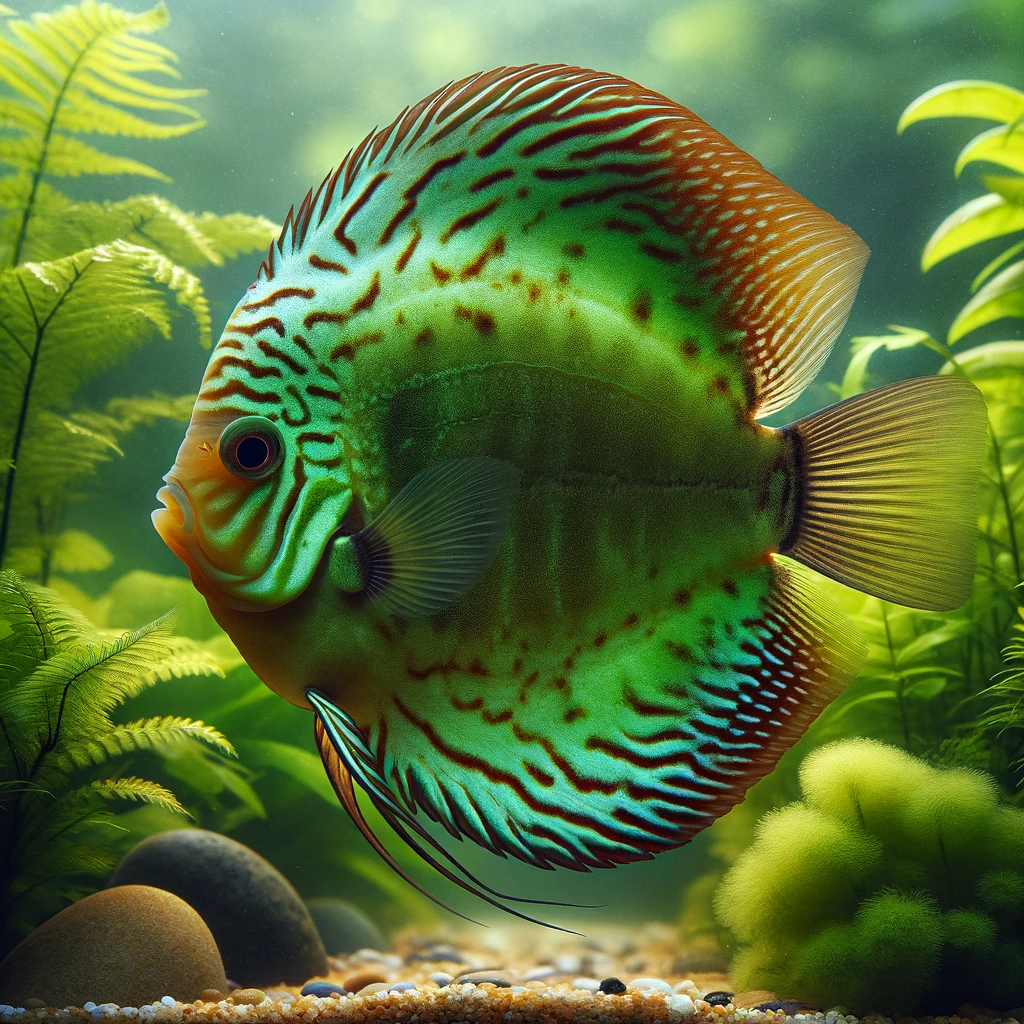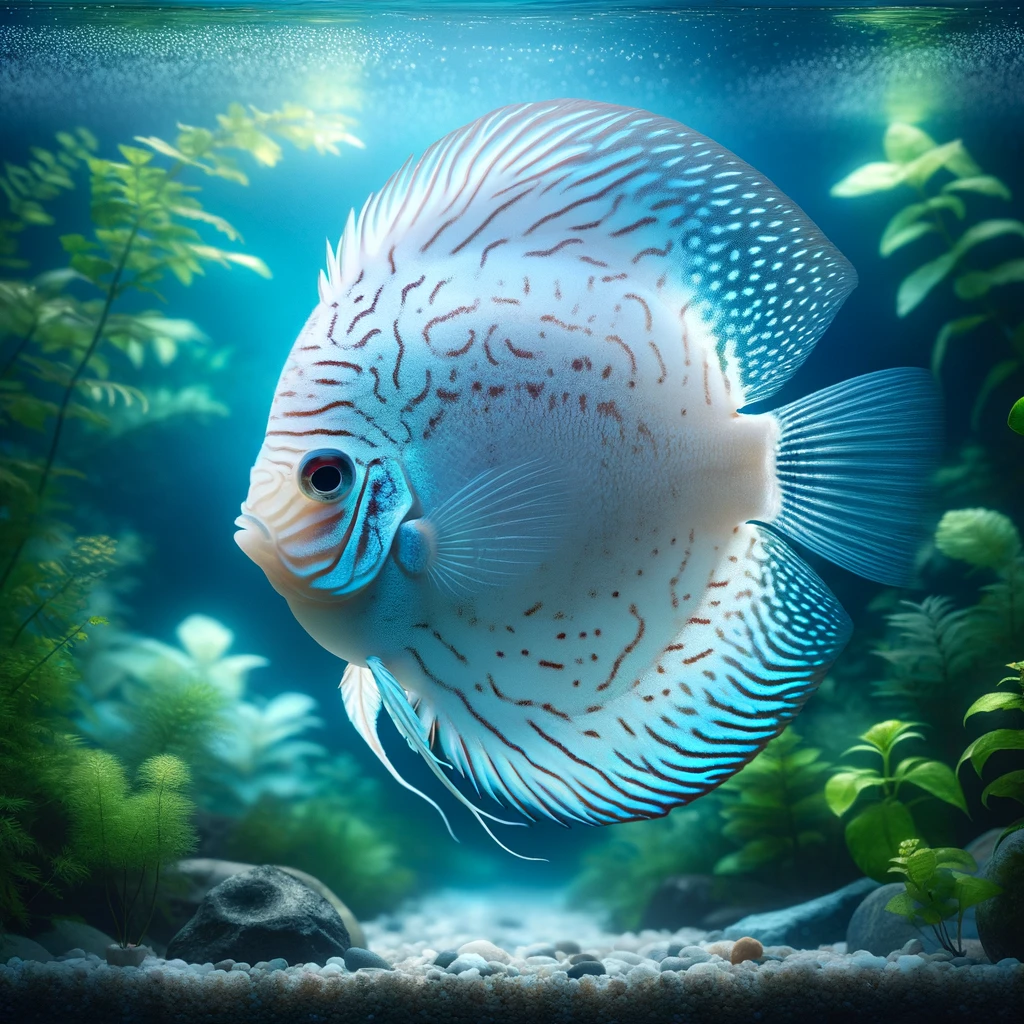Key Factors to Ensure Healthy Discus Fish
Before proceeding with the purchase of discus fish, there are several important factors to consider to ensure you choose healthy, vibrant specimens:
Cleanliness is Key
The breeder’s setup must be immaculate. This applies to all tanks, whether they house discus or other species like tetras, barbs, or labyrinth fish.
Water Parameters
Learn the water parameters from the breeder and gradually adjust your aquarium to match these values. Once stabilized, you’re ready to purchase.
Choosing a Color Variant
Take your time to observe the fish closely, which could take up to half an hour. Opt for active fish and display their colours vividly, as this indicates good health.
Discus fish come in a stunning array of colour variations, each with its unique beauty. Here are some popular colour variants you might encounter:
Blue Discus:
- Turquoise Blue: These discuses have a bright blue colouration with intricate turquoise patterns on their bodies and fins.
- Cobalt Blue: Known for their solid blue colour, cobalt blue discus are striking with their intense hue.
Red Discus:
- Red Melon: These discs feature a vibrant red colour throughout their bodies, often with contrasting white or yellow faces.
- Marlboro Red: Characterized by a deep red body and bright yellow face, Marlboro Reds are highly sought after.
Green Discus:
- Green Tefé: Named after the Tefé River, these discs have a rich green colour with intricate patterns that mimic their natural habitat.
- Alenquer Green: With shades of green and brown, Alenquer Greens have a natural, earthy appeal.
Brown Discus:
- Chocolate Discus: These discuses exhibit a rich, chocolate-brown colour, often with subtle patterns.
- Wild Brown: Similar to their natural counterparts, wild brown discus have a more subdued, natural appearance.
Yellow Discus:
- Golden Sunrise: These discus boast a bright yellow colour, sometimes with a hint of red or orange around the edges.
- Yellow Diamond: Known for their solid, bright yellow colour, yellow diamonds are eye-catching and vibrant.
White Discus:
- Snow White: Pure white with no other markings, Snow White discus has an ethereal beauty.
- White Pigeon: These discus have a white base colour with subtle patterns and markings, often in shades of blue or red.
Pigeon Blood Discus:
- Pigeon Blood Red: These discus have a white base with red or orange patterns, giving them a striking appearance.
- Pigeon Checkerboard: Known for their distinctive checkered patterns, these discus are a visual delight.
Leopard Discus:
- Leopard Spotted: These discus feature spots in shades of red, orange, or brown on a lighter background, resembling a leopard’s coat.
- Leopard Snake Skin: With intricate patterns and spots, these discus are among the most intricately marked varieties.
Striped Discus:
- Royal Blue: These discus have blue bodies with vertical stripes, often with metallic sheen.
- Tiger Striped: Characterized by bold vertical stripes, these discus resemble the pattern of a tiger.
When selecting a colour variant, consider how the fish will complement the aesthetics of your aquarium. Each colour variant can bring a unique visual appeal to your setup, and mixing different variants can create a stunning, dynamic display. Remember, the most important factor is the health and activity level of the fish, as a vibrant and active discus is a healthy discus. Take your time, observe their behaviour, and choose the ones that stand out to you the most.
Physical Health Checks
- Shape: Discus should be round, even as juveniles. Elongated bodies may indicate stunted growth due to past illness.
- Eyes: The size of the eyes about the body should be proportionate; oversized eyes can be a bad sign.
- Head and Belly: Look for a well-formed forehead and belly. Sunken features often indicate malnutrition.
- Behavioural Signs: Healthy discus will swim to the top when your hand approaches the tank, expecting food. If a fish hangs back or is pushed aside by others, it may not be healthy.
- Feeding: Observe the fish eating. Healthy discus should approach food without hesitation.
- Breathing: Normal breathing should not exceed 60 breaths per minute except after feeding. Watch for one-sided breathing, which could indicate gill parasites.
- Activity: Signs like erratic swimming or scratching can indicate parasites. Healthy discus are calm and show interest in their surroundings.
Size Considerations
For display tanks, choose mature discus, ideally no smaller than 12 cm, as young fish require frequent feeding, leading to higher water contamination.
Social Dynamics
Discus are schooling fish and should be kept in groups of at least five to distribute any aggression. Avoid keeping them in pairs unless for breeding purposes.
For Beginners

Returning Home and Exploring More
Follow the link below to return to the home section.
While you’re here, we’d like to introduce you to our global store at Taekwondo4Fitness.com, where we offer a wide range of products not only for fitness, martial arts, and nutrition but also for enhancing your overall lifestyle. Here are some of our featured categories that might interest you:
- Premium Taekwondo Gear
- Smart Fitness Trackers for Active Lifestyles
- Strength Haven: Unleash Your Potential at Home
- Flexibility Mastery: Tools for Improved Splits and Beyond
- Essential Tech Gear: Your Guide to Computer and Accessories
- Creative Capture: Filming and Photography Essentials
- Queenieke Women’s Active Wear: Top Picks for Style and Performance!
- Playtime Wonderland: Unleash Your Child’s Imagination
- The Valentine’s Day Shop
- Best Sellers in Beauty & Personal Care
- Top Home & Kitchen Must-Haves – Customer Favorites
- Exclusive Promotions: Tailored Just for You!
At Taekwondo4Fitness.com, we believe in a holistic approach to health and wellness, which complements the serene and rewarding hobby of fishkeeping. Whether you’re looking to enhance your physical fitness, find the best nutrition products, or explore tools for your active lifestyle, we have something for everyone. Visit us and discover how our products can help you lead a balanced and fulfilling life in and out of the aquarium.





















